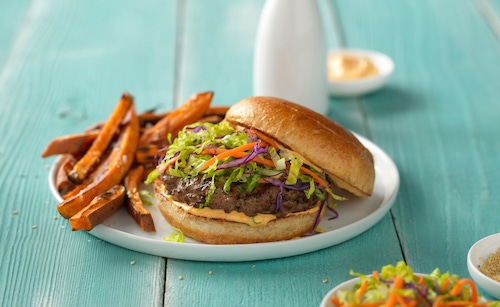USDA awards $12.1 million in record Farm to School grants
The Trump Administration grants millions of dollars to support Farm to School grants to help bring local foods to schools while supporting American producers.
June 29, 2020

The Made In America movement continues to gain momentum with the Trump Administration’s announcement to award $12.1 million in Farm to School grants.
This is the most awarded since the grant program’s inception, with 159 programs receiving funds.
The Farm to School grants are administered by the USDA, and the goal is to use these funds to bring fresh, local foods into schools, daycares and summer youth programs in the upcoming school year while also supporting economic opportunities for America’s farmers and ranchers.
“USDA’s Farm to School Program is a win-win,” said Brandon Lipps, USDA’s deputy under secretary for food, nutrition, and consumer services. “The grants announced today will help build bright futures for our children by connecting them to where their food comes from, while also nourishing the local economy and supporting American agriculture.”
According to a USDA press release, “USDA’s Food and Nutrition Service (FNS) awarded grants of between $20,000 and $100,000 to projects in 46 states, the District of Columbia, and Guam. Grantees represent the wide diversity of partners involved in farm to school efforts, including agricultural producers, tribal nations, non-profits, state agencies, and schools spanning both rural and urban areas.
“To help target funds to high-impact projects, FNS awarded bonus points to applications serving schools with a high population of students eligible for free and reduced-price meals; submitted by or serving tribal nations; and located in or targeting an Opportunity Zone, a census tract designation for low-income communities. In all, the projects will serve more than 7,610 schools and 2.5 million students, more than half of whom are eligible for free or reduced priced meals.”
Examples of how these grants will be used include a mobile farmers market for kids at urban elementary schools in Minnesota; an afterschool summer garden program in California; a marketing campaign to help build relationships between producers and educators in West Virginia; and providing bison and beef to the reservations in South Dakota, just as a few examples.
To read more about projects happening in your state, click here.
According to the USDA, “Our mission is to increase food security and reduce hunger by providing children and low-income people access to food, a healthful diet and nutrition education in a way that supports American agriculture and inspires public confidence.”
I think that’s a mission we can all get behind, and in an upcoming blog, I’ll share details about a private initiative that seeks to accomplish this goal, as well.
As a side note, even as USDA works to support the Farm to School movement, there is great uncertainty about what schools will look like in the fall as it relates to the COVID-19 pandemic.
A recent Politico poll of 2,000 voters revealed that 54% of Americans are uncomfortable with reopening K-12 schools in the fall; 58% of those polled said they were uncomfortable with daycare centers reopening; and 48% were uncertain that colleges and universities should reopen.
In May, President Trump tweeted, “Schools in our country should be opened ASAP.”
Time will tell how this will play out state by state, but it’s nice knowing that there will be a strong agriculture and food component to these educational institutions once things settle back into a new routine this fall.
The opinions of Amanda Radke are not necessarily those of beefmagazine.com or Farm Progress.
About the Author(s)
You May Also Like





